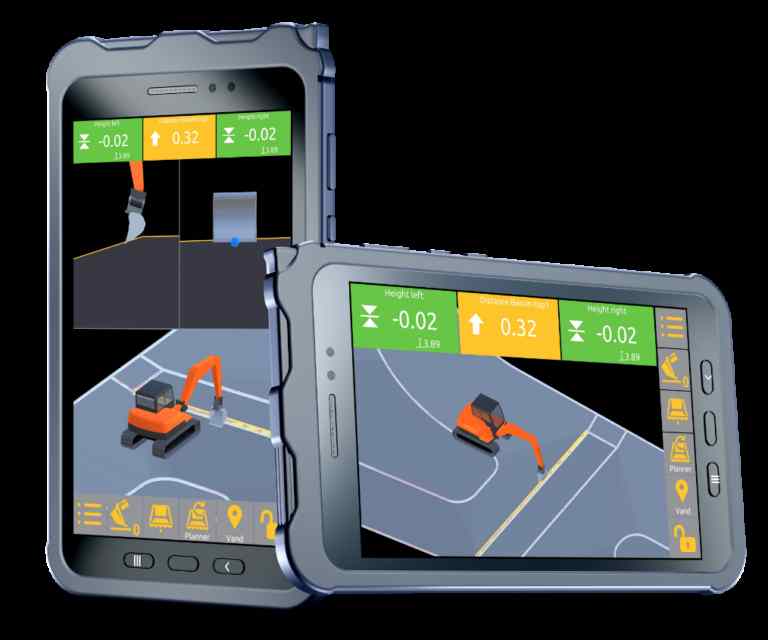Last Updated on November 28, 2025 by Admin
Modern earthmoving is faster, smarter, and more precise than ever, thanks largely to the rise of gps excavator technology. What used to require guesswork, stringlines, constant re-marking, and surveyor callouts can now be handled directly from the cab. With the right features, operators can work more efficiently, reduce rework, and deliver spot-on accuracy on every pass. Here are the top five features that make a gps excavator system something you will never want to operate without.
1. Real-Time 3D Positioning on Every Movement
The biggest game changer is real-time 3D positioning. Instead of relying on eye judgment or manual checks, operators can see the excavator’s exact location, bucket position, and grade relation right on the screen. This gives instant feedback and eliminates the need to hop out of the machine to inspect work. Operators spend less time second-guessing and more time digging accurately. Whether shaping batters, cutting pads, or trenching to spec, real-time guidance boosts confidence and productivity.
2. On-Screen Models That Show Exactly What to Build
Digital design files are now the backbone of modern excavation. A gps excavator system can load site models directly into the cab, so operators can see finished levels, slopes, boundaries, and cut-fill maps in a clear visual format. Instead of relying on printed plans or verbal instructions, everything is displayed right where they need it. This dramatically reduces communication errors and ensures every operator is working toward the same target. With a model on screen, you always know whether you are on grade or need to adjust.
3. Bucket and Boom Sensors That Improve Precision
Well-calibrated motion sensors make all the difference. Advanced tilt, boom, and stick sensors track every movement of the machine with impressive accuracy. They calculate angles, depth, and bucket position instantly, allowing operators to work with tight tolerances even without external markers. These sensors are especially valuable in detailed or confined excavation where centimetre accuracy matters. The result is cleaner cuts, smoother surfaces, and less rework at the end of the day.
4. Automatic Depth and Grade Alerts
One of the most appreciated features of gps excavator is automated depth and grade alerts. Your system will notify you the moment you reach the correct depth or when you are drifting off grade, preventing costly mistakes. This is particularly useful when trenching, preparing floors, or shaping precise gradients where going too deep can slow the job or require additional material to backfill. With automatic alerts, you avoid over-digging and maintain consistent accuracy throughout the project.
5. Seamless Integration With Productivity Tools
Modern systems do more than guide the excavator. They integrate seamlessly with cloud platforms, site management software, and reporting tools. This lets project managers track progress in real time, send updated models directly to machines, and generate production data without needing operators to log anything manually. For contractors, this means fewer delays, better communication, and more predictable workflow. For operators, it means they always have the latest design and instructions without leaving the cab.
Why These Features Are Essential for Today’s Worksites
Together, these features drastically reduce guesswork and make earthmoving much more efficient. Operators complete tasks faster, projects run more smoothly, and everyone on site benefits from improved accuracy. Teams can maintain tighter tolerances, minimise rework, and keep costs under control. With labour shortages and pressure to deliver projects more quickly, adopting gps excavator technology is one of the smartest advantages a contractor can gain.
Once operators get used to working with these tools, going back to manual methods feels impossible. The improvements in workflow, speed, and precision are simply too valuable to give up. If you want to stay competitive, improve jobsite safety, and get more done with the crew you already have, these five gps excavator features are ones you will never want to work without.
Related Posts:
- 14 Best Construction Equipment Tracking Software 2025
- GPS and Its Applications in the Construction Industry
- Where Can I Buy Affordable GPS Tracking Devices for My Fleet?
- Backhoe Rental: Complete Cost Guide for Construction Professionals
- Full Guide on How to Choose the Right Excavator in 2025


